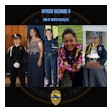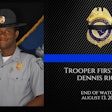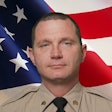The great British Prime Minister Benjamin Disraeli famously said, "There are lies, damned lies, and statistics."
It's a funny line, one that was later quoted by Mark Twain. But the truth is that statistics don't lie. They are just subject to interpretation, and their truth is in the eye of the beholder.
Consider the widespread belief that violent crime rates are dropping in America. This stanza of the sociologists' catechism is backed up by the statistic that the murder rate is declining. Most academics attribute the decline to a falling birthrate during the '80s and '90s. The argument reads like this: Fewer babies in a given decade, fewer young men in the following decades. Fewer young men means less violent crime.
But as recently pointed out by Lt. Col. Dave Grossman in his keynote speeches at TREXPO West, we actually live in the most criminally violent period in American history. The murder rate is down, not because Americans have stopped trying to kill each other but because emergency medicine has advanced far enough to keep the victims of deadly assaults alive when just years before they would have died.
As Grossman told the TREXPO audience, "If we break in this dark and desperate hour, it will be because we can't find enough qualified people [to serve as police officers]." This is one of the greatest problems facing our society: Violent crime is rising, and the number of cops on the street is falling.
No single issue will have more effect on your lives in the coming decades. You are truly a very thin blue line. In some major American cities, the ranks of police are 10 percent less than the number of officers allocated by the city budget.
Consider that statement for a moment; it bears repeating for emphasis: The number of cops on the job in many cities is 10 percent less than the number allocated by the bean counters. The number budgeted is actually much less than what you really need to police the streets.
What this means for you as police officers is that you have a lot less help when you need it. Backup takes longer to arrive. Police presence is minimal. Some crimes aren't investigated. And the dominos fall, leading to more violence, more crime, and even fewer people willing to serve as police officers and face down that violence.
You are in the crosshairs. In the last few months alone, a lot of cops have been killed, including two police volunteers in New York City, an FBI agent gunned down as the result of a bank robbery, and two patrol officers in Charlotte, N.C.
As this issue of POLICE arrives in your mailbox, thousands of officers and their supporters are traveling to Washington, D.C., for National Police Week. The culmination of this event is a candlelight vigil at the National Law Enforcement Officers Memorial, where the names of those Charlotte officers, the NYPD volunteers, the FBI agent, and dozens of other heroes who died this year serving in the Thin Blue Line will soon be engraved on the memorial wall.
Undoubtedly, more names will follow. That is the tradition of service that you represent. You are a rare breed, warriors in a life and death struggle with those who prey on the weak and victimize the peaceful. Sometimes you suffer losses in that fight. And names go on the wall.
Keeping names off the wall is job one for all law enforcement trainers. It's also job one here at POLICE Magazine. We offer you information that we hope will help you do your job better and come home safely to your loved ones. But right now, in light of all of the challenges you face, I offer you the immortal words of Sgt. Phil Esterhaus from the old TV show "Hill Street Blues" who voiced the best advice anyone ever gave an American police officer: Be careful out there.














